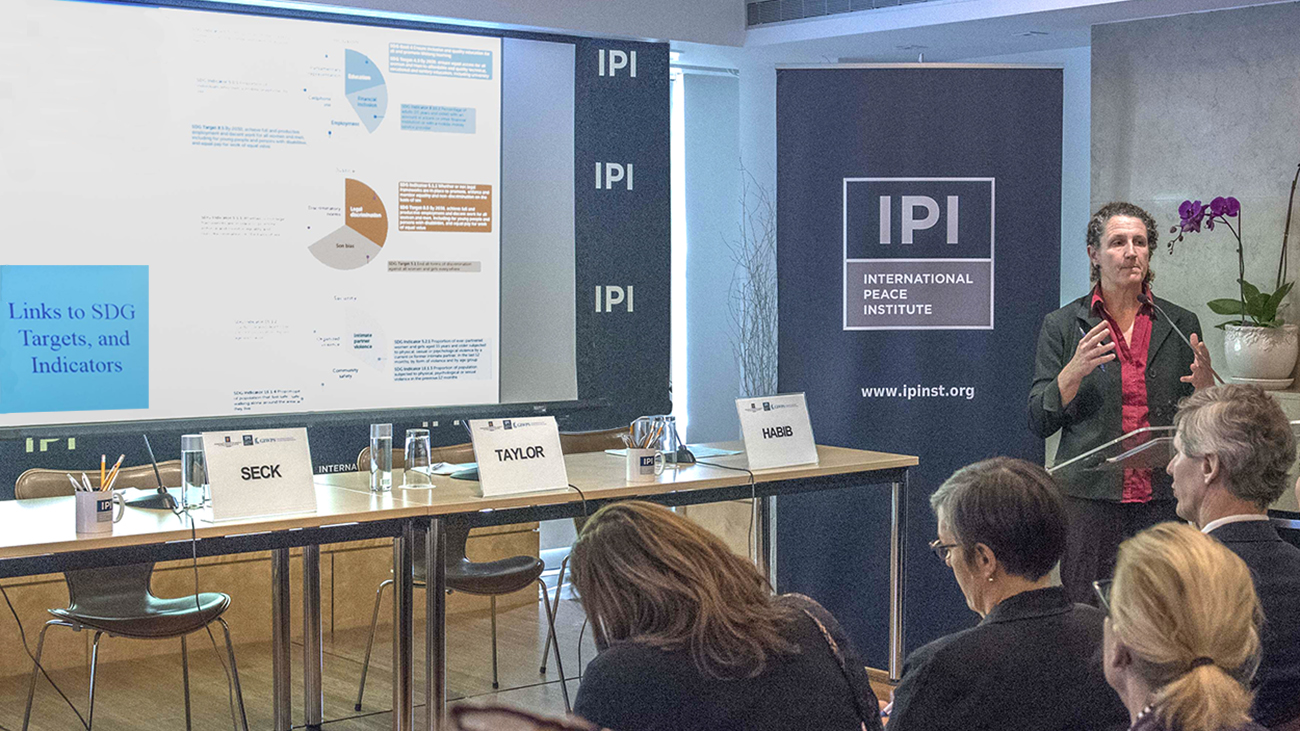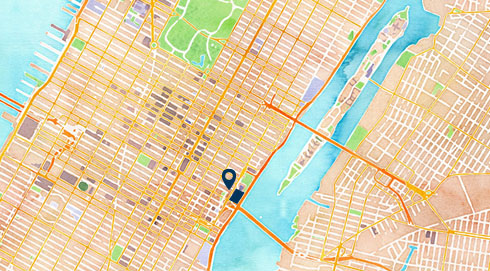Global indices are a way to assess and compare national progress on key issues by distilling an array of complex information into a single number and ranking. Until recently, there was no index that explicitly brought together the three dimensions of women’s inclusion, access to justice, and security.
To fill that void, a new women, peace, and security index has been created by the Peace Research Institute Oslo (PRIO) and the Georgetown Institute for Women, Peace, and Security (GIWPS). On March 15th, IPI, GIWPS, and the Permanent Mission of Norway to the United Nations held a panel discussion on the subject.
“This index is actually the first one to be built on the principles of the SDGs. It encourages a holistic approach to rights, development, and security,” said the introductory speaker, Norwegian Minister of Foreign Affairs, Ine Eriksen Søreide. “In my opinion, conflict prevention must be a key part of the strategy that we undertake for development and for the SDGs. And this index gives us a potential platform to integrate it into action.”
“For too long,” she said, “security and gender experts on both sides have been doing a lot of good work. And they have been working in parallel but not necessarily engaging with each other. So there is a real need to break down the silos. And I think all the good work that has been done in the respective silos now needs to be introduced to each other for the first time. By putting this index together with data from other indices, we are gaining a more complete picture than we’ve had so far.”
Jeni Klugman, Managing Director of GIWPS, introduced the jointly developed index and explained the benefits of this new form of measurement. She noted that other indices had major gaps in their focus on traditional development, and that they lacked key explanatory factors.
“For example, we look to see whether girls are attending school,” she said. “But surely that’s incomplete if the girls are not safe in their homes or if they’re not safe in their communities on the way to school. Likewise, if we look at traditional measures of security and peace, the aspects of discrimination and systematic exclusion are almost invariably excluded.”
Within the index’s three dimensions of inclusion, justice, and security, inclusion is measured by women’s achievements in education employment, and parliamentary representation, as well as access to cellphones and financial services. Justice is captured in both formal and informal aspects through indicators that measure the extent of discrimination in the legal system, alongside any bias in favor of sons and exposure to discriminatory norms. Finally, security is measured at three levels–family, community, and society.
The combination of these dimensions is unique, Dr. Klugman said, “In that sense, I think it is truly a major innovation.” The index is also the first measure to take advantage of the new emerging consensus associated with the sustainable development agenda, she said. She relayed the hope that the index would be used as “an opening to have deeper conversations.”
In their findings, one measure that emerged among the statistics of all 153 countries ranked was that while organized violence at the societal level is important, of greater relevance for many women around the world is “security at the community, as well as at the family level,” she said. “I think you’d all know that intimate partner violence is the most common form of violence experienced by women globally but with significant variation across countries.”
Despite the fact that intimate partner violence is significant globally, measuring its variation across countries is “notoriously difficult,” said Papa Seck, Chief Statistician of UN Women. Lack of resources and weak institutions, including national statistical systems, are some of the challenges of assembling reliable data, he noted.
Furthermore, he said, “All of the markers of data availability are worse in conflict and post-conflict situations,” and data collection and security are closely related, as “data collection requires security: the security of those who are collecting the data on the ground.”
On the importance of funding, Mr. Seck added, “For UN women in particular, it is a hot button issue. This index, I think, is really critical for us on how we make the case.” He also noted that in many cases statisticians are not trained in gender-specific approaches, and that gender experts are not often trained in statistics. This creates a gap in much needed data and analysis.
Lina Abou Habib, Executive Director of the Women’s Learning Partnership, whose group specializes in global south countries in or exiting from conflict, stressed the difficulties of gathering data in such places. Ms. Habib explained that data collection on women’s rights issues is not often given priority or resources, which, in addition to security as a prerequisite for data collection, continues to be a significant challenge. The answer to this problem, she said, requires “a framework where data collection is allowed.”
She spoke to the specific example of one unnamed country in which it is illegal to collect data. “It’s illegal to do any form of research, it’s illegal to go to the field and ask people questions,” she said. Ms. Abou Habib posited a solution to improve the scope of data collection, which she called making data collection a practice–“to make data collection empowering for women, to make it as part of a workshop, as part of a conversation with the community. I think advocacy is the most important thing in terms of the purpose of the data.”
Ms. Habib then described two levels of this data’s significance. First, the data can “hold governments accountable, and I’m not just saying it as a slogan. It means that women have to know about it.” The second level, she said, is using advocacy to build “a momentum, which I see it’s really possible from the relationship we have with the women with whom we work.” In terms of data collection, she emphasized the priority of frequency and accountability.
In conclusion, IPI Research Fellow and moderator Sarah Taylor, said, “There’s a reason that data collection is political, and it’s because properly collected data has the power to expose rights violations, to point to changes that need to be made. And so I think that really speaks to the power of the project, particularly in the women, peace, and security agenda.”








